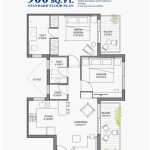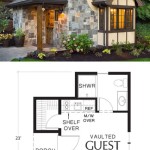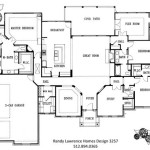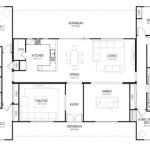House plans are detailed drawings that provide a visual representation of a building’s structure and design. They are essential for planning and constructing homes, commercial buildings, and other structures. House plans include blueprints, floor plans, and elevations, which provide detailed information about the building’s dimensions, materials, and layout.
Drawing house plans is a complex process that requires knowledge of construction techniques, building codes, and design principles. It is important to ensure that house plans are accurate and complete to avoid costly mistakes during construction. Many software programs are available to assist with the process of drawing house plans, but it is still beneficial to have a basic understanding of the process.
In this article, we will discuss the steps involved in drawing house plans. We will cover the basics of drafting, including the types of lines, symbols, and scales used in house plans. We will also provide tips and techniques for creating accurate and detailed house plans.
When drawing house plans, it is important to keep the following points in mind:
- Use a scale
- Draw to code
- Use accurate dimensions
- Include all necessary details
- Use clear and concise lines
- Use standard symbols
- Check your work
- Get feedback from others
By following these tips, you can create house plans that are accurate, detailed, and easy to understand.
Use a scale
When drawing house plans, it is important to use a scale. A scale is a ratio that compares the size of an object on a drawing to its actual size. For example, a scale of 1/4 inch = 1 foot means that 1 inch on the drawing represents 4 feet in real life.
Using a scale ensures that your house plans are accurate and proportional. It also makes it easier to calculate distances and dimensions on the plans.
- Choose a scale that is appropriate for the size of your project. For small projects, such as a single-family home, a scale of 1/4 inch = 1 foot or 1/8 inch = 1 foot is common. For larger projects, such as a commercial building, a scale of 1/8 inch = 1 foot or 1/16 inch = 1 foot may be more appropriate.
- Use the scale consistently throughout your drawings. Do not change the scale from one drawing to another, as this will make it difficult to compare the drawings.
- Indicate the scale on your drawings. This will help others to understand the size of the objects on the drawings.
- Use a scale ruler or other measuring tool to ensure that your drawings are accurate.
By using a scale, you can create house plans that are accurate, proportional, and easy to understand.
Draw to code
When drawing house plans, it is important to draw to code. Building codes are regulations that govern the construction of buildings. They are in place to ensure that buildings are safe, habitable, and energy-efficient.
- Check with your local building department to determine which building codes apply to your project. Building codes vary from place to place, so it is important to check with your local building department to find out which codes apply to your project.
- Familiarize yourself with the building codes. Once you know which building codes apply to your project, take some time to familiarize yourself with the codes. You can find building codes online or at your local library.
- Draw your house plans to code. When drawing your house plans, make sure to follow the building codes. This will help to ensure that your house is safe, habitable, and energy-efficient.
- Have your house plans reviewed by a building official. Once you have drawn your house plans, it is a good idea to have them reviewed by a building official. This will help to ensure that your plans are complete and compliant with the building codes.
By drawing to code, you can help to ensure that your house is safe, habitable, and energy-efficient.
Use accurate dimensions
When drawing house plans, it is important to use accurate dimensions. Dimensions are the measurements of the length, width, and height of a building or object. Accurate dimensions are essential for ensuring that the building is constructed correctly and that all of the components fit together properly.
To ensure accuracy, use a scale ruler or other measuring tool to measure the dimensions of the building or object. Record the dimensions in a clear and concise manner. It is also important to indicate the units of measurement (e.g., inches, feet, meters).
In addition to the overall dimensions of the building, it is also important to include the dimensions of all of the individual components, such as the walls, windows, doors, and stairs. This will help to ensure that all of the components are the correct size and that they fit together properly.
Accurate dimensions are essential for creating house plans that are accurate, detailed, and easy to understand. By following these tips, you can create house plans that will help to ensure that your building is constructed correctly and safely.
Here are some additional tips for using accurate dimensions when drawing house plans:
- Use a scale ruler or other measuring tool to ensure that your measurements are accurate.
- Record the dimensions in a clear and concise manner.
- Indicate the units of measurement (e.g., inches, feet, meters).
- Include the dimensions of all of the individual components, such as the walls, windows, doors, and stairs.
- Check your work to ensure that all of the dimensions are accurate.
- Get feedback from others to help ensure that your dimensions are accurate.
Include all necessary details
When drawing house plans, it is important to include all necessary details. This includes:
- The overall dimensions of the building. This includes the length, width, and height of the building.
- The dimensions of all of the individual components. This includes the walls, windows, doors, stairs, and other components.
- The location of all of the doors and windows. This should be indicated on the floor plan.
- The location of all of the plumbing fixtures. This includes the sinks, toilets, showers, and bathtubs.
- The location of all of the electrical fixtures. This includes the lights, switches, and outlets.
- The location of all of the HVAC equipment. This includes the furnace, air conditioner, and water heater.
- The location of all of the structural elements. This includes the foundation, framing, and roof.
- The materials that will be used to construct the building. This includes the siding, roofing, and windows.
- The finishes that will be used in the building. This includes the flooring, paint, and countertops.
By including all of the necessary details, you can create house plans that are accurate, detailed, and easy to understand. This will help to ensure that your building is constructed correctly and safely.
Use clear and concise lines
When drawing house plans, it is important to use clear and concise lines. This will help to ensure that your plans are easy to read and understand. Here are some tips for using clear and concise lines:
Use a sharp pencil or pen. A dull pencil or pen will create. Use a sharp pencil or pen to create clean, crisp lines.
Draw lines with a consistent thickness. The thickness of your lines should be consistent throughout your drawings. This will help to create a clean and professional look.
Use different line weights to indicate different elements. For example, you can use a thicker line weight for the outlines of walls and a thinner line weight for the interior details.
Avoid using unnecessary lines. Only draw the lines that are necessary to convey the information. Avoid adding unnecessary lines, as this will only make your drawings more difficult to read and understand.
By following these tips, you can create house plans that are clear, concise, and easy to understand.
Here are some additional tips for using clear and concise lines when drawing house plans:
- Use a ruler or other straightedge to draw straight lines.
- Use a compass or other tool to draw circles and arcs.
- Use different colors to differentiate between different elements on your drawings.
- Label your drawings clearly and concisely.
- Check your work to ensure that your lines are accurate and easy to understand.
- Get feedback from others to help ensure that your lines are clear and concise.
Use standard symbols
When drawing house plans, it is important to use standard symbols. Standard symbols are used to represent different elements of a building, such as walls, doors, windows, and plumbing fixtures. Using standard symbols helps to ensure that your house plans are easy to read and understand.
There are many different types of standard symbols used in house plans. Some of the most common symbols include:
- Walls: Walls are typically represented by a solid line. The thickness of the line can vary depending on the type of wall.
- Doors: Doors are typically represented by a rectangle with a line through the center. The direction of the line indicates the direction in which the door opens.
- Windows: Windows are typically represented by a rectangle with two lines through the center. The lines represent the mullions of the window.
- Plumbing fixtures: Plumbing fixtures are typically represented by a circle or square with a symbol inside. The symbol indicates the type of fixture, such as a sink, toilet, or shower.
In addition to these basic symbols, there are also many other symbols that can be used to represent different elements of a building. For example, there are symbols for electrical fixtures, HVAC equipment, and structural elements. You can find a complete list of standard symbols in a drafting manual or online.
When using standard symbols, it is important to be consistent. Use the same symbol to represent the same element throughout your drawings. This will help to ensure that your drawings are clear and easy to understand.
By using standard symbols, you can create house plans that are accurate, detailed, and easy to understand. This will help to ensure that your building is constructed correctly and safely.
Check your work
Once you have completed your house plans, it is important to check your work to ensure that they are accurate and complete. Here are some tips for checking your work:
1. Check your dimensions. Make sure that all of the dimensions on your plans are accurate. This includes the overall dimensions of the building, as well as the dimensions of all of the individual components.
2. Check your lines. Make sure that all of the lines on your plans are clear and concise. Avoid using unnecessary lines, and make sure that the lines are the correct weight and thickness.
3. Check your symbols. Make sure that you are using the correct symbols to represent the different elements of your building. Use standard symbols, and be consistent in your use of symbols throughout your drawings.
4. Check your labels. Make sure that all of the labels on your plans are clear and concise. Avoid using abbreviations, and make sure that the labels are easy to read and understand.
Once you have checked your work, it is a good idea to have someone else review your plans. This could be a friend, family member, or colleague. Having someone else review your plans can help to identify any errors or omissions that you may have missed.
It is also a good idea to check your plans with your local building department. This can help to ensure that your plans are compliant with the building codes. The building department may also be able to provide you with feedback on your plans.
By following these tips, you can help to ensure that your house plans are accurate, complete, and compliant with the building codes. This will help to ensure that your building is constructed correctly and safely.
Get feedback from others
Once you have drawn your house plans, it is a good idea to get feedback from others. This could be a friend, family member, colleague, or even a professional architect or designer. Getting feedback from others can help you to identify any errors or omissions in your plans, and it can also help you to improve the overall design of your building.
- Ask for feedback from people who are familiar with construction. This could include friends or family members who have experience in construction, or it could include professionals such as architects, engineers, or contractors.
- Ask for feedback from people who are not familiar with construction. This can help you to get a fresh perspective on your plans, and it can help you to identify any areas that may be confusing or difficult to understand.
- Be open to criticism. When you ask for feedback, be prepared to receive criticism. Criticism can be helpful, even if it is difficult to hear. It can help you to identify areas where your plans can be improved.
- Use feedback to improve your plans. Once you have received feedback from others, take the time to review their comments and suggestions. Consider their feedback carefully, and make changes to your plans as needed.
Getting feedback from others is an important part of the house planning process. By getting feedback from others, you can help to ensure that your plans are accurate, complete, and easy to understand. This will help to ensure that your building is constructed correctly and safely.









Related Posts








